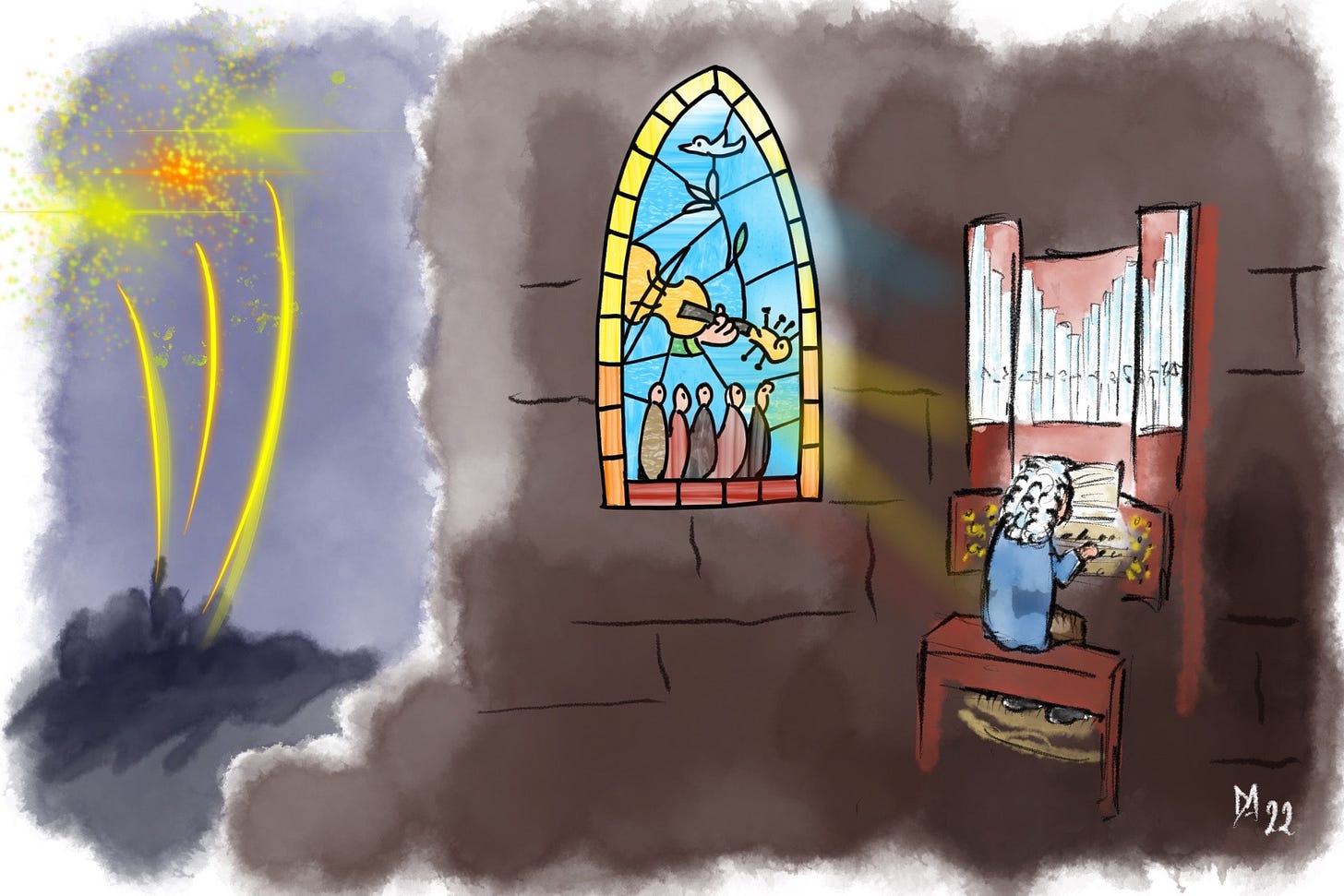J. S. Bach, cantatas featuring a solo for violoncello piccolo - part 3
Only a couple of months and the violoncello piccolo shows up again, mature in his voice and role!
It’s New Year’s Day 1725, Leipzig, and J. S. Bach offers a big festive cantata, the BWV 41, featuring trumpets, oboes, timpani, strings and violoncello piccolo solo. It’s the third time Bach uses the cello piccolo in a cantata. Only a couple of months after BWV 180 and 115 (unfortunately, the catalogue numbers BWV are not in chronological order), the writing and playing of this instrument seems to have matured.

In this cantata, the part of the “violoncello piccolo solo” is into the first violin part, written in (low octave) violin key. So basically, you read a violin key with an instrument that has violin’s open strings but one octave lower. There can be little doubt that this means that it was played by the concertmaster from his seat, changing instrument for this aria.
The style of writing is violinistic. It has many jumps from one string to another, not adjacent, for this being more demanding than the part of the BWV 180, where the jumps involved adjacent strings, and shows that the player had more control over the sound. I would also say Bach himself was confident that even the low strings would play good enough. There are often slurred, fast descending scales that touch even the fourth and fifth string. However, most of the notes are on the first three strings. The range used is the whole one can play in the first position: from C2 to B5.
Despite those many crossing of strings, the part is very lyrical.
Here is an English translation of the text:
“Just as you have offered noble peace
for our nation and us,
so grant to the soul your word that makes us blessed.
If we meet with your salvation,
then we are blessed here on earth
and chosen people there in heaven!”
The rest of the text is about beginning a new year and a prayer that we shall end it like we started it, rejoicing and in health. This aria starts a moment of reflection, prayer and gratitude for the blessings that we may receive. This tenor aria leads to the bass aria, which remembers the enemies and evils we all face and that we can defeat only with god’s assistance and thanks to Jesus’ sacrifice. The end of the cantata is again a festive chorus, celebrating gratitude, obedience and acceptance of what God will send us, hoping that this means a good year.
So the violoncello piccolo is the instrument that bring us from simple celebration into intimate reflection and dialogue with god. It has for the first time a true solistic role and Bach seems to enjoy his voice, not forced as a big cello would be on this high passages, and also his “agility”, in the jumps to different strings, a typical violinistic style of writing.
Again, I couldn’t find a video featuring a cello da Spalla. Here the version by Masaaki Suzuki, Hidemi Suzuki at the cello piccolo.
Further Readings
For a detailed study on Violoncello piccolo in Bach’s Cantatas, read Koji Otsuki “J. S. Bach's violoncello piccolo”, Indiana University, 2020
For the two previous Cantatas:
News from da Spalla world
Mr. Yutaka Kaga is about to play Vivaldi cello concert RV 419 in A minor! Also the 3rd Brandeburg Concert was in the program, but unfortunately it will be postponed to another concert, due to health reasons of some of the performers.
Updates from our workshop
Almost there, but not there yet!! There’s an incredible amount of details that take so much time! On top, Alessandro these past two weeks was unexpectedly called to play first flute in his orchestra, so he couldn’t dedicate much time to his work. However I think that we now miss “only” sound-post, bridge, pegs fitting…. Plus all those little details! 🤣
Stay tuned to hear how they play!!
Featured video of the week
Enjoy this elegant and playful Menuett from the Gulda cello concerto. And you can find the other movements too, in Sergey Malov’s YouTube channel!










